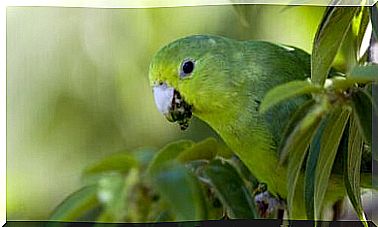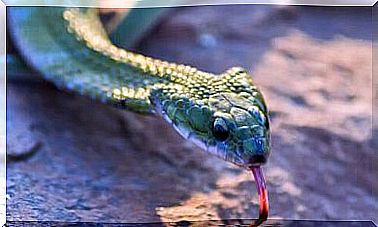The Bat-eared Fox: Its Hunting Techniques

This carnivorous mammal of the canid family is small and is characterized by having long legs and large ears. In this article, we’ll tell you more details and talk about the bat-eared fox hunting techniques.
Characteristics of the bat-eared fox
It is one of the smallest dogs in the family, as it measures a maximum of 70 centimeters in height and weighs about three kilos.
It draws attention for its large ears, which can be the same size as its head, and also for its long paws, which ‘detach’ a lot from the ground and allow it to walk through the pastures without problems.
The coat of the bat-eared fox is short, with the exception of the tail. As for coloration, it is mainly grayish brown with black ‘edges’. The face and throat are lighter.
Bat-eared fox habitat
There are two populations of the bat-eared fox, both in Africa. The first is located in the east of the continent – between Somalia and Tanzania – and the second is in the south, mainly in Angola. They prefer savannas, steppes and semi-deserts, very dry and hot places.

Behavior and reproduction of the bat-eared fox
It is a monogamous species, that is, it forms couples for life. It is normal to see ‘spouses’ with the last litter, usually made up of six puppies.
The couple is in charge of digging a cave or underground burrow after the mating season, or they can also use a hiding place abandoned by another animal.
Gestation lasts two months and the puppies are breastfed for 15 weeks. At this stage, the father assumes most of the care, including hygiene, defense, monitoring, transport and shelter.
As for its ‘general’ behaviors, the bat-eared fox is mainly nocturnal in winter and diurnal during summer. This species is very social and ‘gathers’ with other families to play, rest and eat in community… as well as to protect itself from predators.
hunting technique
The bat-eared fox hunting technique is really curious and allows us to understand why each species is endowed with certain physical characteristics.
In the case of this canid, it is the long ears that allow the location of small invertebrates – ants, locusts, termites or crickets – that are the basis of its diet.
Once they are found, she uses her long forelegs to dig holes at high speed. The shape of the mouth and muzzle also helps with this task: it has 50 sharp teeth.
In addition, she also has a ‘special’ jaw that allows her to chew five times a second. There is no insect that can escape before being pounded.

It is worth noting that, although they can ‘hunt’ in groups, looking for termite colonies, they do not compete with each other for food because they do not have an instinct for territoriality and are highly sociable.
Thus, when one specimen finds food, it satisfies its appetite and, when finished, gives way to another so that it can continue to enjoy the same food source.
Undoubtedly, the bat-eared fox is a very curious species and different from what we might think of a canid in terms of eating and behavioral habits. And, without a doubt, their long ears make a big difference!









